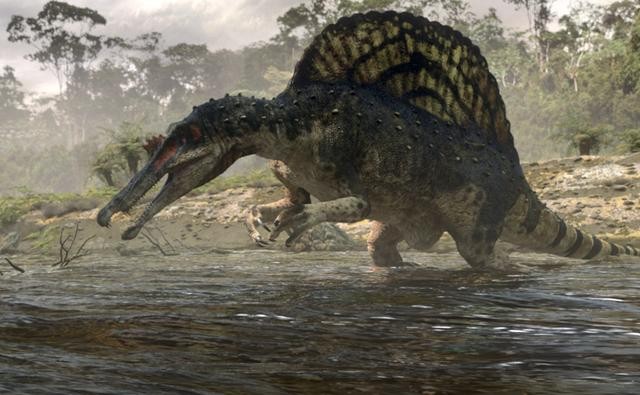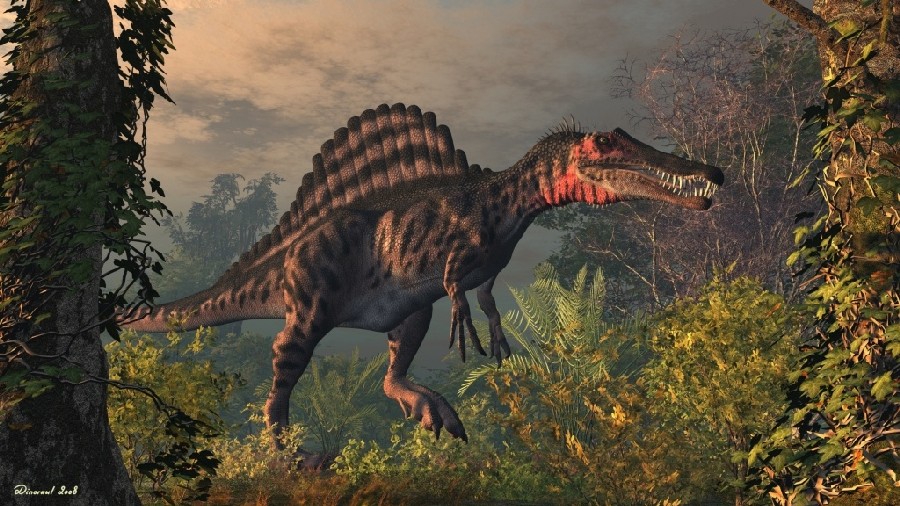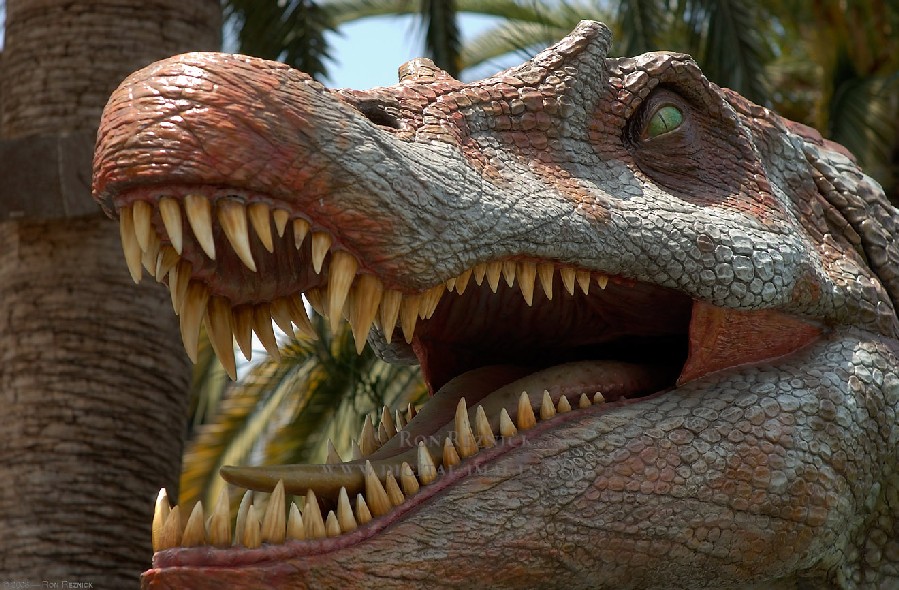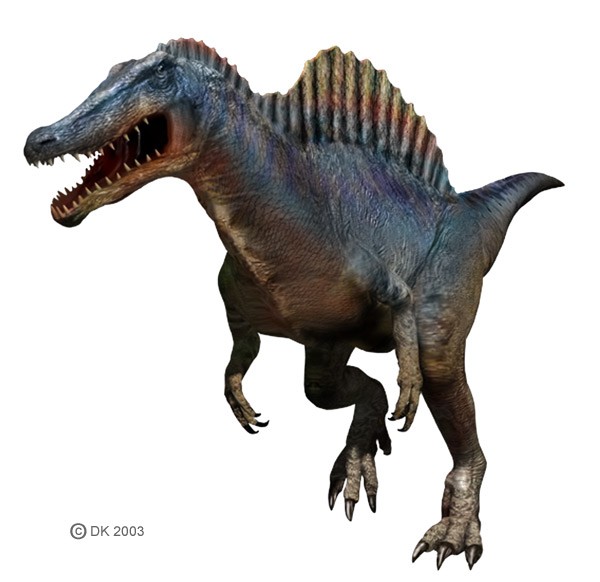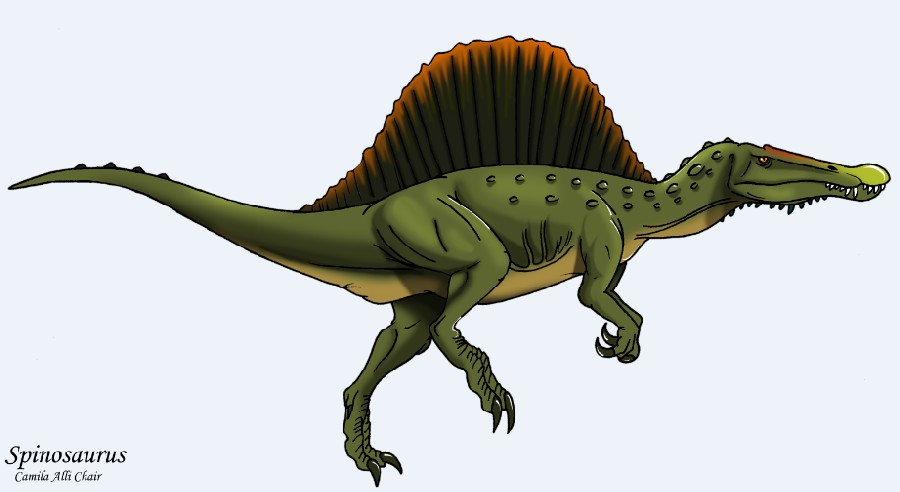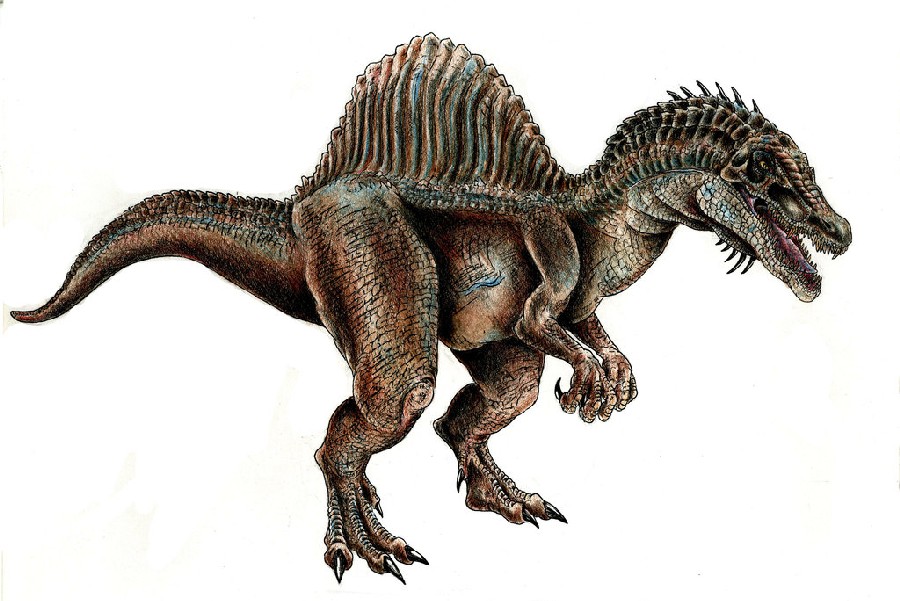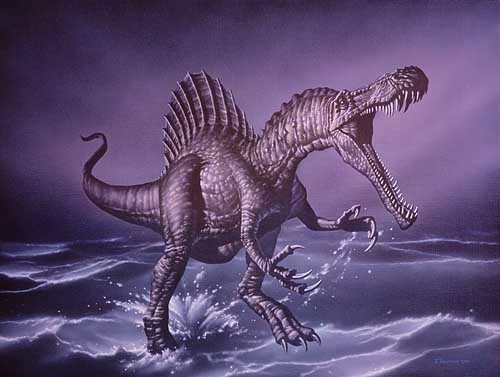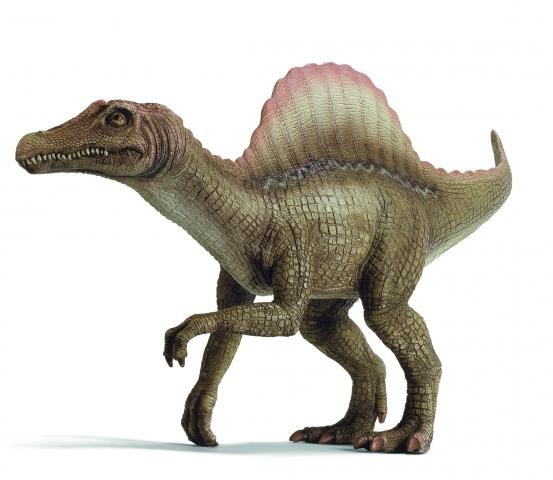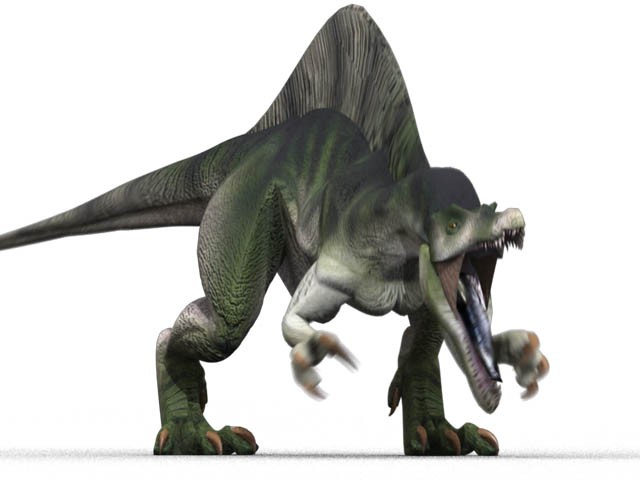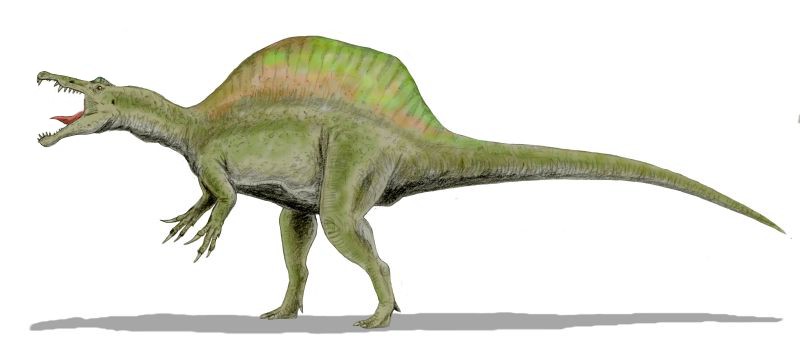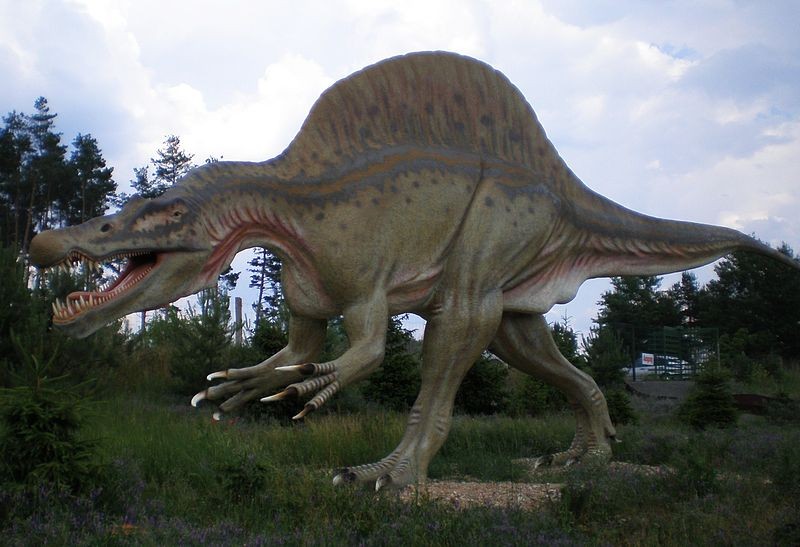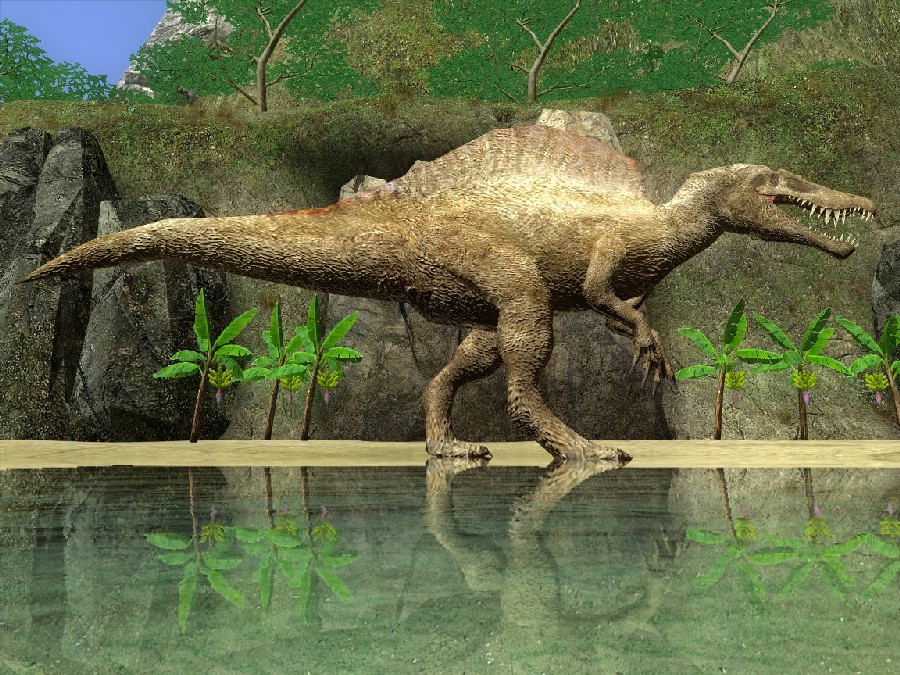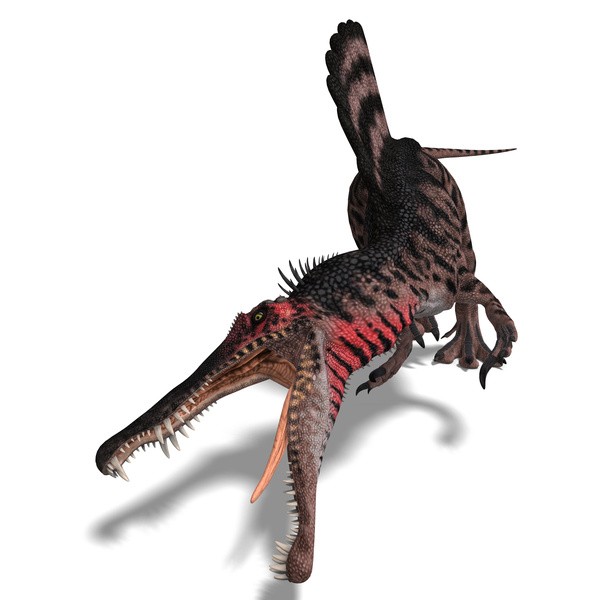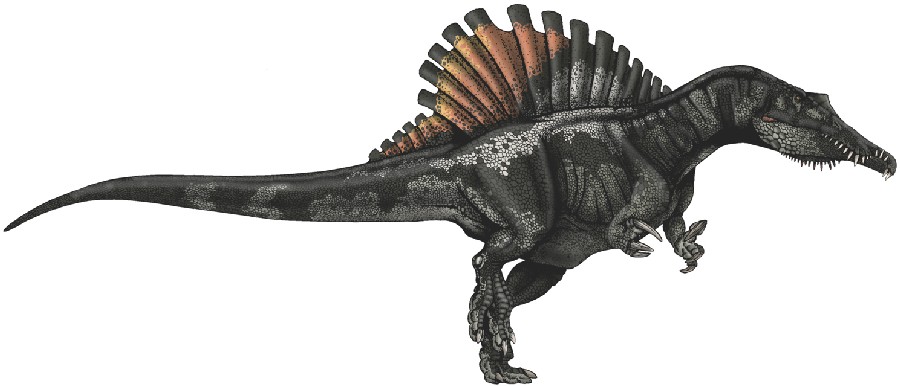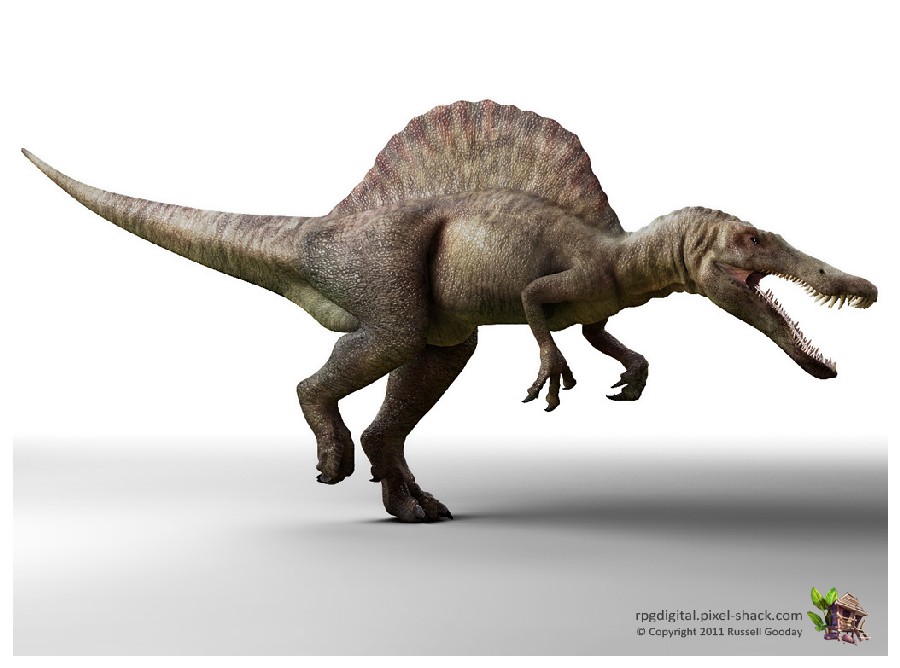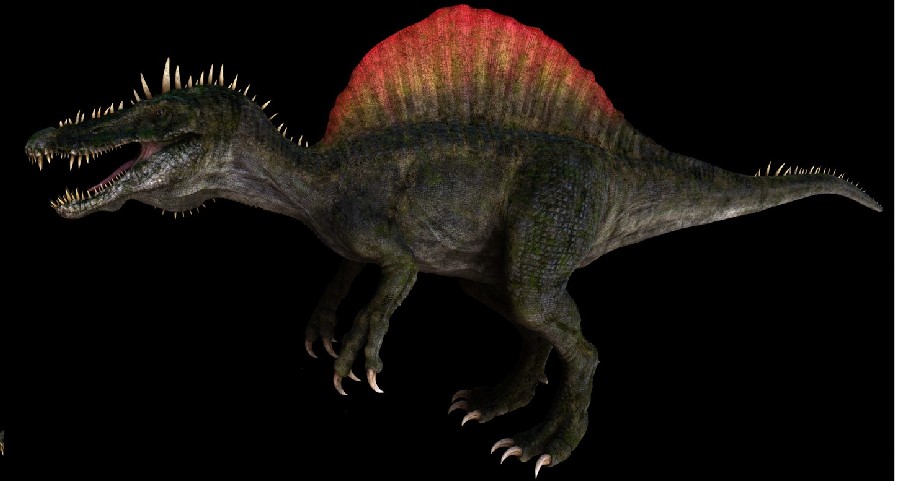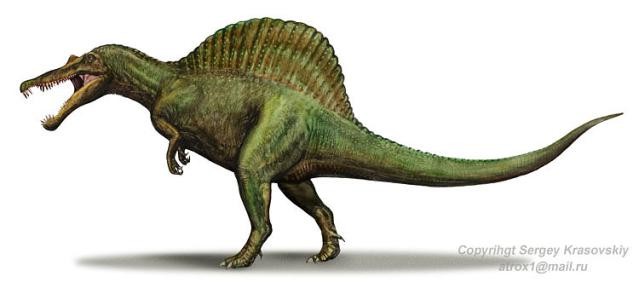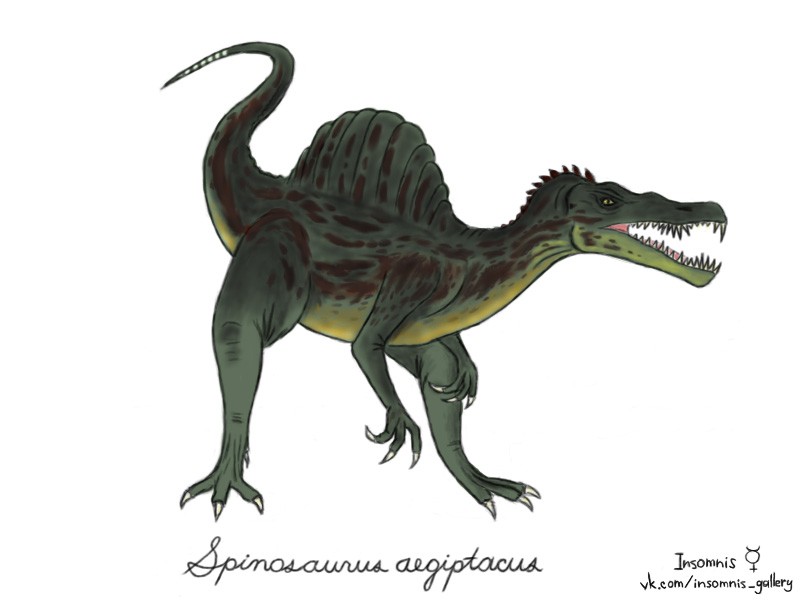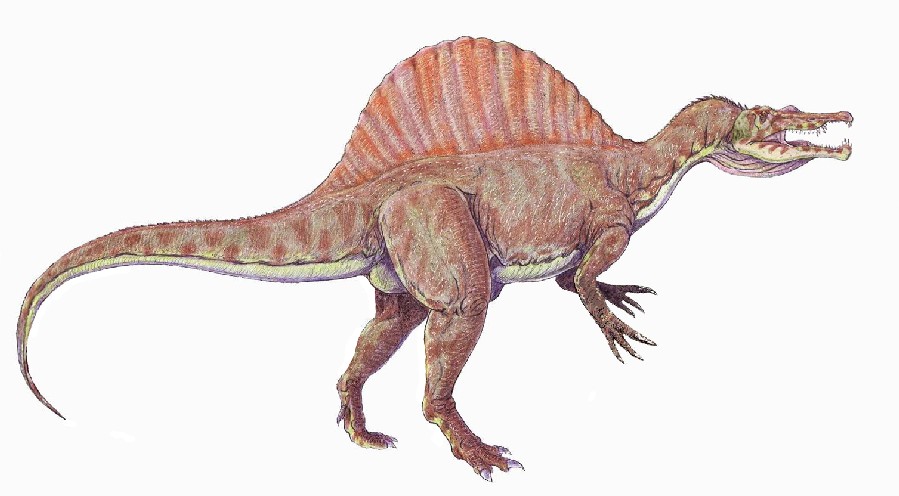База данных динозавров:
Общее количество образцов: 1365| name | Spinosaurus (Спинозавр) |
| period | Cretaceous (Меловой период) |
| period_mya | 66 |
| date_from | Lower Cretaceous Epoch (Нижний мел) |
| date_to | Cretaceous Period (Меловой период) |
| date_from2 | 145 |
| date_to2 | 66 |
| lived_in | a terrestrial habitat (наземная среда обитания) |
| was_a | carnivore (хищники) |
| reproduced_by | laying eggs (откладывание яиц) |
| url | https://dinosaurpictures.org/Spinosaurus-pictures |
| description | The Spinosaurus was a truly enormous theropod of the Cretacious period, so called because of the line of spindly growths extending from its spine. It was among the largest of the theropods, if not the largest, with estimates topping out at up to 59 feet. This dwarfs even its most infamous cousin, the mighty Tyrannosaurus Rex, by a whopping 19 feet.Spinosaurus was long thought to be a bipedal dinosaur, but recent developments have lent credence to the theory that—at least part of the time—it moved about on all fours. The function of its dorsal spines is debatable, with some researchers positing that it is for aesthetic display, and others for heat regulation, while still others see the evidence of fish in the Spinosaurus’ diet as supporting the use of a dorsal fin for swimming.In art, the Spinosaurus may be depicted as bipedal or quadrupedal depending on the date of the work. The dorsal spines most often form a fin on the creature’s back, and its head is long and narrow, resembling that of a crocodile. |
| articles | F. de Broin and C. Grenot. 1971. Sur la découverte d’un nouveau gisement de Vertébrés dans le Continental Intercalaire saharien: la Gara Samani (Algérie) [On the discovery of a new vertebrate locality in the Saharan Continental Intercalaire: Gara Samani]. Comptes Rendus de l'Académie des Sciences à Paris, Série D 272:1219-1221 C. Dal Sasso and S. Maganuco. 2005. New information on the skull of the enigmatic theropod Spinosaurus, with remarks on its size and affinities. Journal of Vertebrate Paleontology 25(4):888-896 M. A. Medeiros and C. L. Schultz. 2002. A fauna dinossauriana da "Laje do Coringa", Cretáceo Médio do nordeste do Brasil [The dinosaurian fauna of "Laje do Coringa", middle Cretaceous of northeastern Brazil]. Arquivos do Museu Nacional, Rio de Janeiro 60(3):155-162 E. Stromer. 1934. Ergebnisse der Forschungsreisen Prof. E. Stromers in den Wüsten Ägyptens. II. Wirbeltierreste der Baharîje-Stufe (unterstes Cenoman). 13. Dinosauria [Results of the expeditions of Professor E. Stromer in the Egyptian deserts. II. Vertebrate animal remains from the Baharîje bed (lowest Cenomanian). 13. Dinosauria]. Abhandlungen der Bayerischen Akademie der Wissenschaften Mathematisch-naturwissenschaftliche Abteilung, Neue Folge 22:1-79 T. Schlüter and W. Schwarzhans. 1978. Eine Bonebed-Lagerstätte aus dem Wealden Süd-Tunisiens (Umgebung Ksar Krerachfa) [A bonebed from the Wealden of southern Tunisia (near Ksar Krerachfa)]. Berliner Geowissenschaften Abhandlungen A 8:53-65 R. Amiot and X. Wang. 2010. Oxygen and carbon isotope compositions of middle Cretaceous vertebrates from North Africa and Brazil: Ecological and environmental significance. Palaeogeography, Palaeoclimatology, Palaeoecology 297(2):439-451 E. Stromer. 1915. Ergebnisse der Forschungsreisen Prof. E. Stromers in den Wüsten Ägyptens. II. Wirbeltier-Reste der Baharîje-Stufe (unterstes Cenoman). 3. Das Original des Theropoden Spinosaurus aegyptiacus nov. gen., nov. spec. Abhandlungen der Königlich Bayerischen Akademie der Wissenschaften Mathematisch-physikalische Klasse Abhandlung 28(3):1-31 S. Bouaziz and E. Buffetaut. 1988. Nouvelles découvertes de vertébrés fossiles dans l'Albien du sud tunisien [New discoveries of fossil vertebrates in the Albian of southern Tunisia]. Bulletin de la Société Géologique de France, 8e série 4(2):335-339 C. S. Churcher and D. A. Russell. 1992. Terrestrial vertebrates from Campanians strata in Wadi el-Gedid (Kharga and Dakleh Oases), western desert of Egypt. Journal of Vertebrate Paleontology 12(3, suppl.):23A S. E. Evans and M. Manabe. 1999. Early Cretaceous lizards from the Okurodani Formation of Japan. Geobios 32(6):889-899 P. C. Sereno and D. B. Dutheil. 1996. Predatory dinosaurs from the Sahara and Late Cretaceous faunal differentiation. Science 272:986-991 P. C. Sereno and J. A. Wilson. 2004. New dinosaurs link southern landmasses in the mid-Cretaceous. Proceedings of the Royal Society of London B 271(1546):1325-1330 C. S. Churcher and G. De Iuliis. 2001. A new species of Protopterus and a revision of Ceratodus humei (Dipnoi: Ceratodontiformes) from the Late Cretaceous Mut Formation of eastern Dakhleh Oasis, Western Desert of Egypt. Palaeontology 44(2):305-323 N. Ibrahim and P. C. Sereno. 2014. Semiaquatic adaptations in a giant predatory dinosaur 345(6204):1613-1616 L. J. Flynn and A. Brillanceau. 1987. Vertebrate fossils from Cameroon, West Africa. Journal of Vertebrate Paleontology 7(4):469-471 D. A. Russell. 1996. Isolated dinosaur bones from the Middle Cretaceous of the Tafilalt, Morocco. Bulletin du Muséum National d'Histoire Naturelle, Paris, 4e série, section C 18(2-3):349-402 J. M. Harris and D. A. Russell. 1986. Preliminary notes on the occurrence of dinosaurs in the Turkana Grits of northern Kenya. E. Haug. 1905. VIII. Paléontologie [VIII. Paleontology]. In F. Foureau (ed.), Documents Scientifiques de la Mission Saharienne. Mission Foureau-Lamy 2:751-832 J. Le Loeuff and E. Buffetaut. 2000. Mesozoic continental vertebrates of Tunisia. 5th European Workshop on Vertebrate Palaeontology, Staatliches Museum für Naturkunde, Geowissenschaften Abteilung. Program. Abstracts. Excursion Guides N. Ibrahim and D. M. Unwin. 2010. A new pterosaur (Pterodactyloidea: Azharchidae) from the Upper Cretaceous of Morocco. PLoS One 5(5):e10875 |
| trophic_level | carnivore (хищники) |
| habitat | terrestrial habitat (наземные среды обитания) |
| motility | actively mobile (подвижный) |
| points | 28.4311 28.9148, 28.1667 7.06667, 30.5057 -4.83694, 8.34505 14.7915, 28.3793 28.9261, 28.4173 28.9026, 28.3333 29.1167, 30.9 -3.9833, 25.6178 29.2906, -2.4781 -44.4614, 30.0333 -5.2, 17.9333 5.61667, 29.6667 1.91667, 30.905 -3.855, 33.1729 10.2558, 30.8975 -3.87028, 25.4931 29.5194, 31.57 -4.2, 33.1108 10.3337, 4.27306 35.815, 31.61 -4.3, 30.8817 -3.86147, 31.5317 -4.66556, 31.51 -4.08, 31.5878 -4.17669, 33.1905 10.2892, 31.6167 -4.26667, |
